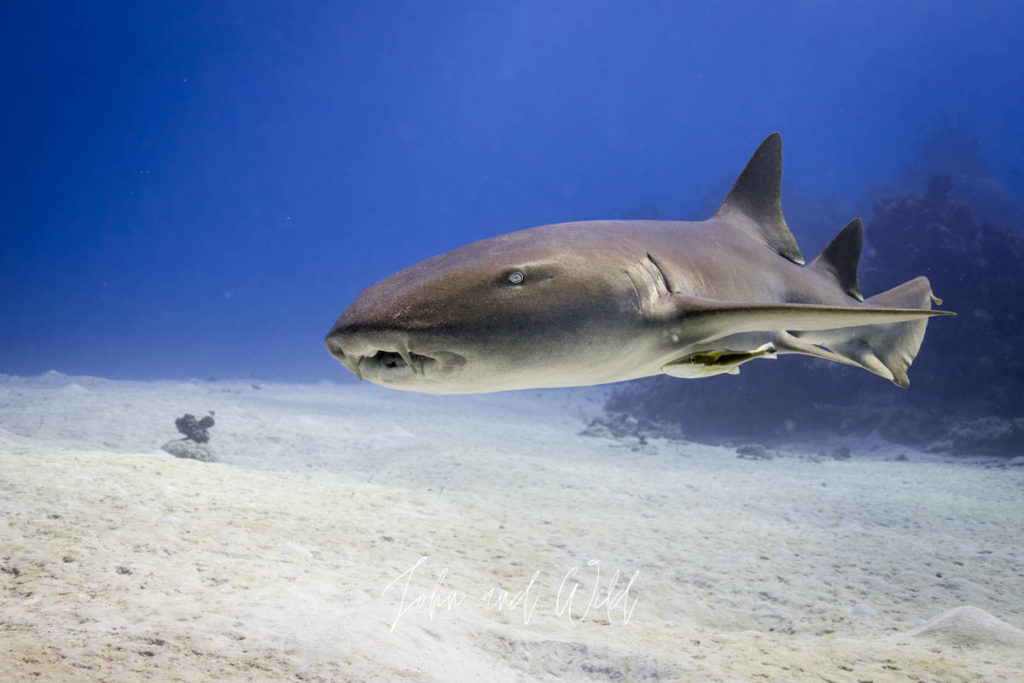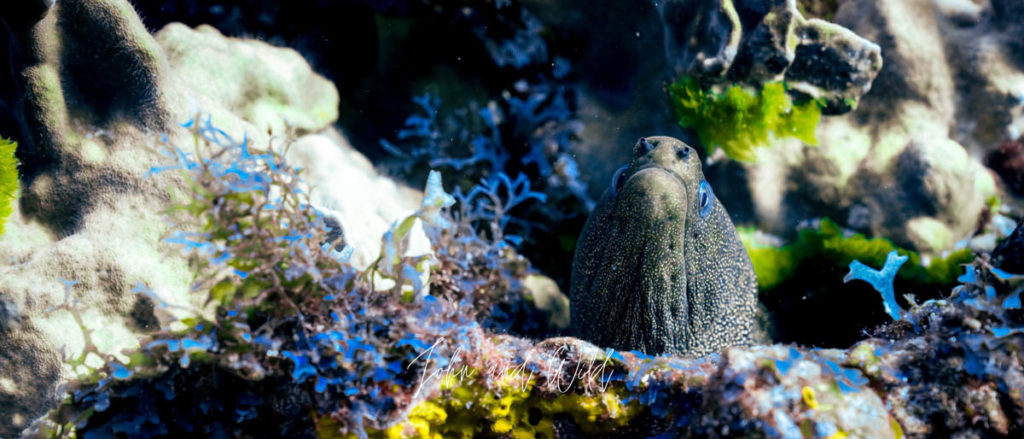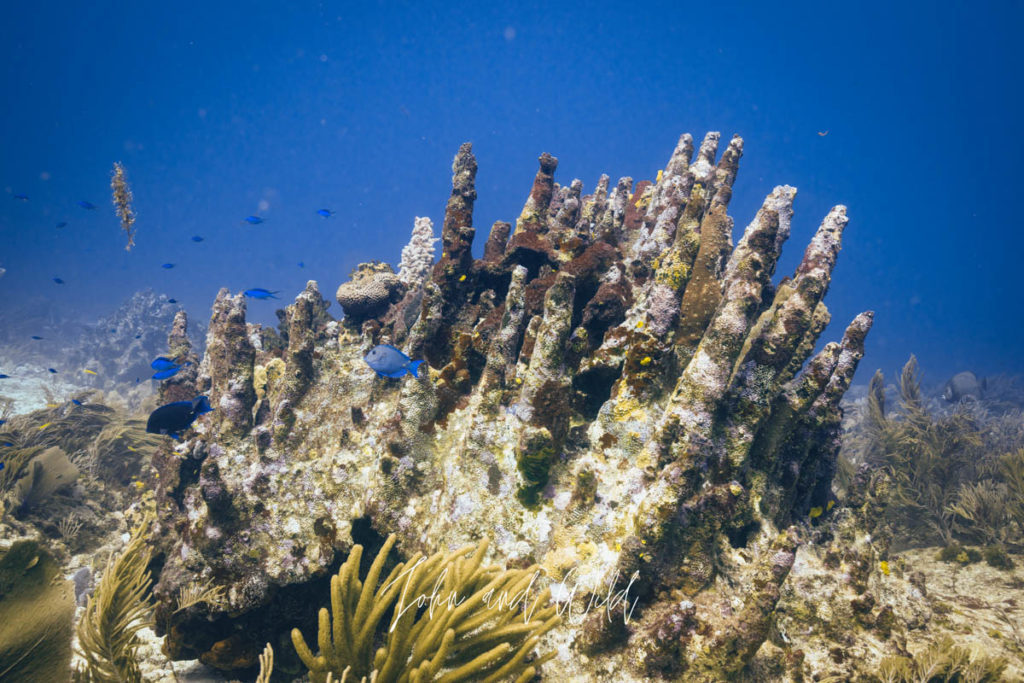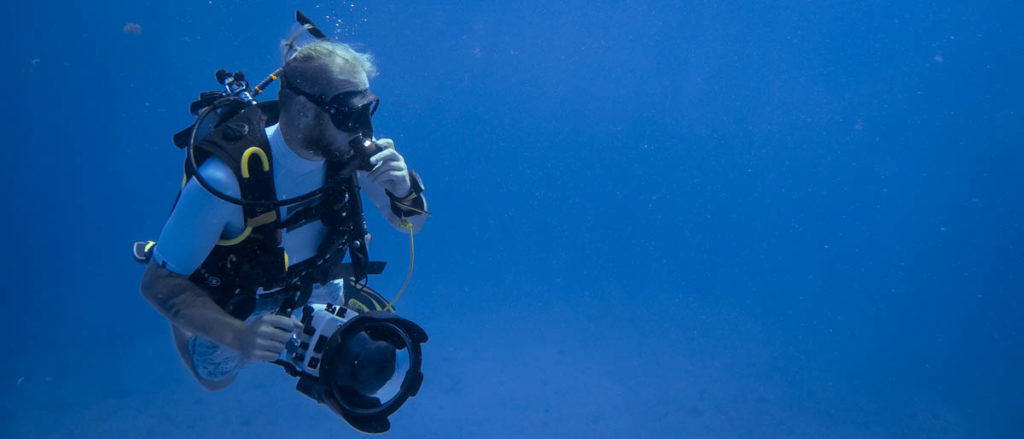I’ve always loved being on boats, sailing over the water with the wind on my face. But I had never thought that one day I’d be strapping a tank on and doing a backwards roll off one to explore that alien world that exists beneath the waves. I’d never dived before, so I wanted to test myself and learn a new skill. I knew little about marine ecosystems beyond the limited amount I covered in my Environmental Science degree, so it made perfect sense to me that when I discovered GVI offered marine conservation programmes with dive training I should just go for it. So, I booked without any hesitation. I’d completed a terrestrial conservation project with GVI in 2019 so I knew the deal. Their brand, their ethics, and their unwavering commitment to the environment.

So, I did an hour taster in a local pool back in the UK to check if I was in any way functional sub aqua. And before I knew it, I was settling into their base in Puerto Morelos, Mexico – a small but vibrant town south of Cancún on the Yucatán, and home to a tiny but significant section of the 700-mile long Mesoamerican Barrier Reef system. I was here to learn as much as possible about this rare and delicate ecosystem that is under threat from a dizzying array of anthropogenic impacts and coral diseases. To learn so much and become a competent diver at the same time was a unique opportunity I just couldn’t miss out on.
Within a few weeks (due to rough weather) I was PADI Open Water qualified, then Advanced, and then obtained my CRRD (Coral Reef Research Diver) – a unique qualification focused on scientific reef research techniques for monitoring fish, corals, and invertebrates. I remember our first open water dive and skills tests at the aptly named Fish Market (everywhere has a site called this and they never disappoint). It was a lifechanging moment, being 10 metres down on the sand among the coral structures, the abundant yellowtail snappers and gigantic shoals of grunts swimming around us as we each in turn flooded our masks and cleared them again. To complete our dive, we swam through the expanse of vibrant corals on the reef and saw a huge green moray completely out of its hole under a coral shelf, gawping at us in their typically misconstrued pseudo-terrific way. The whole experience had me hooked.

The programme gave me a huge amount of respect for the marine scientists working every day to understand one of the most climate-affected habitats in the world, how the data is collected and used, the intricate relationships between the reef inhabitants and ocean habitats throughout their lifecycles, and most importantly, how climate change is affecting it all. The ocean is the canary in the coal mine for environmental change and it was a privilege to learn so much about it first-hand. I understood how to dive responsibly with minimal impact, something I wish more divers and dive shops considered. We go so fervently into these fragile environments, and they deserve far more of our respect and care than we know.
On a lot of recreational dives, I still see stray fins connecting with corals, wayward dangly bits, overzealous kicking leading to indiscriminate pushing back off coral structures, and inquisitive hands picking up and handling marine flora and fauna (shockingly, a guide in Croatia grabbed an octopus and held it out to show us). And there is still a propensity for using sunscreen in the ocean, even under the clever ruse of “reef safe” versions. What is it about the thirst for human exploration and experience that provokes such negative impacts and thoughtlessness? I’m grateful that I joined the program and learned to respect the underwater world as much as I do the terrestrial one, and I had the time of my life doing it! I would love to return to GVI and complete my Rescue and Dive Master so I can contribute to scientific efforts underwater, but for now, work on land calls!

After the trip I found myself back on the Yucatan, diving for fun and enjoying and respecting its diverse and captivating marine life. The GVI experience has only been topped by diving in Chinchorro off the coast of Mahahual about 5 hours south of Cancún, where we saw over 10 nurse sharks in one dive. Many of which were inquisitive and came to greet us! It was an unforgettable experience. So, here’s to a new life love, new knowledge and skills, and many, many more scuba adventures enjoying and conserving the beautiful world beneath the waves!
Article and photographs kindly submitted by John Collins







